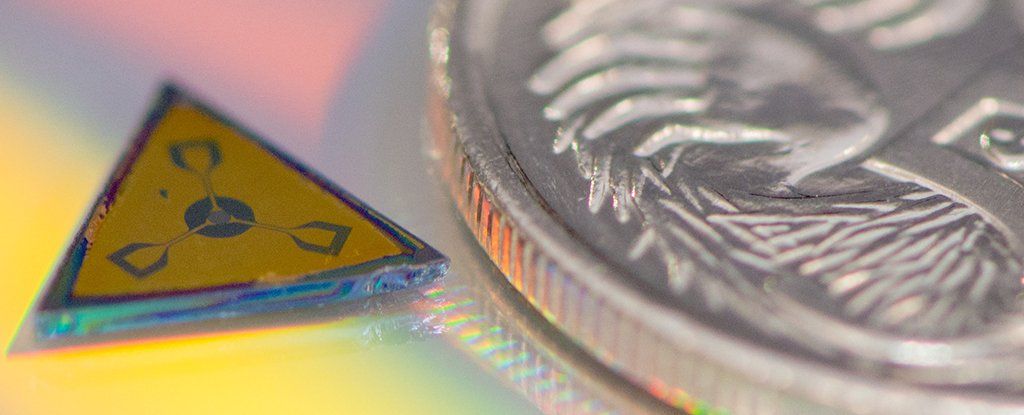This app lets you draw and paint using augmented reality.
Get the latest international news and world events from around the world.
Glove lets you feel virtual reality
Tiny air pockets allow you to feel what isn’t there. — HaptX Inc.
Photoshop uses AI to make selecting people less of a hassle
Masking a human or other subject out of a scene is a pretty common trick nowadays, but it’s is still arguably one of the hardest and lowest-tech parts of Photoshop. Adobe’s about to make that a lot easier, thanks to an upcoming AI-powered feature called Select Subject. Using it is pretty much idiot-proof: From the main or “Select and Mask” workspaces, you just need to click anywhere on the image, and it’ll automatically select the subject or subjects in the image. From there, you’re free to change the background or tweak the subject separately.
The tech is powered by Adobe’s AI platform, Sensei. “Complicated details around the subject aren’t an issue, because this feature is using machine learning to recognize the objects,” Adobe Photoshop Product Manager Meredith Payne Stotzner says in the YouTube video (below). During the demo, she uses it select a single person on the street, a group of volleyball players, a couple on the beach and a red panda.

Physicists Just Invented an Essential Component Needed For Quantum Computers
In 2016, the Nobel Prize in Physics went to three British scientists for their work on superconductors and superfluids, which included the explanation of a rather odd phase of matter.
Now, for the first time, their discovery has a practical application – shrinking an electrical component to a size that will help quantum computers reach a scale that just might make them useful.
In a collaboration with Stanford University in the US, a team of scientists from the University of Sydney and Microsoft have used the newly found phase of matter — topological insulator — in shrinking an electrical component called a circulator 1,000 times smaller.

How refugee scientists can change the world
Although it is hard to get exact numbers, thousands of science students and professionals are thought to be among those seeking refuge. Now they are the focus of a documentary by Italian artist and film-maker Nicole Leghissa. Her Science in Exile recently premiered at the World Science Forum in Jordan, and will be shown globally in 2018.
What becomes of the scientists among those fleeing war and conflict in Africa and the Middle East, asks a documentary, Science in Exile.
Insurance Companies Are Now Offering Discounts if Your Let Your Tesla Drive Itself
While accidents have happened, one of the most appealing things about autonomous vehicles is their capacity to make our roads a safer place. Now, insurance companies are starting to offer financial incentives to promote adoption.
Britain’s largest automobile insurance company, Direct Line, has announced a 5 percent discount for customers who activate Autopilot functionality in their Tesla. It follows in the footsteps of Root, a startup that offers a similar promotion across nine states in the US.
Scientists Just Took a Giant Leap Forward in the Quest to Create Artificial Life
A new study reveals that semi-synthetic organisms — in this case, E.coli bacteria containing two artificial DNA bases — can produce proteins.
Netflix’s Beautiful New Sci-Fi Series Will Make You Rethink Death
What is a body other than the vessel for your consciousness? Does the one you’re using right now really matter all that much? Why not, when your current body gets all old and run down, don’t you just get a new, young, beautiful, and healthy one? That’s the pitch in the first trailer for Netflix’s new dystopian sci-fi series Altered Carbon, which takes the form of an advertisement for Psychasec.
“Centuries ago, mankind discovered a way to transfer consciousness into a new body making death a mere inconvenience,” says the commercial. “Since then we’ve been providing an unparalleled pedigree of human sleeves to only the most discerning clientele. Psychasec: Live forever in the body you deserve.”
Based on Richard K. Morgan’s 2002 award-winning cyberpunk novel, Altered Carbon is set hundreds of years in the future when the super rich can repeatedly trade out their bodies (called “sleeves”) to live forever. The new Netflix series follows a soldier/P.I. named Takeshi Kovacs (played by both Will Yun Lee and Joel Kinnman) who wakes up centuries later in a new body to solve the murder of a billionaire.

